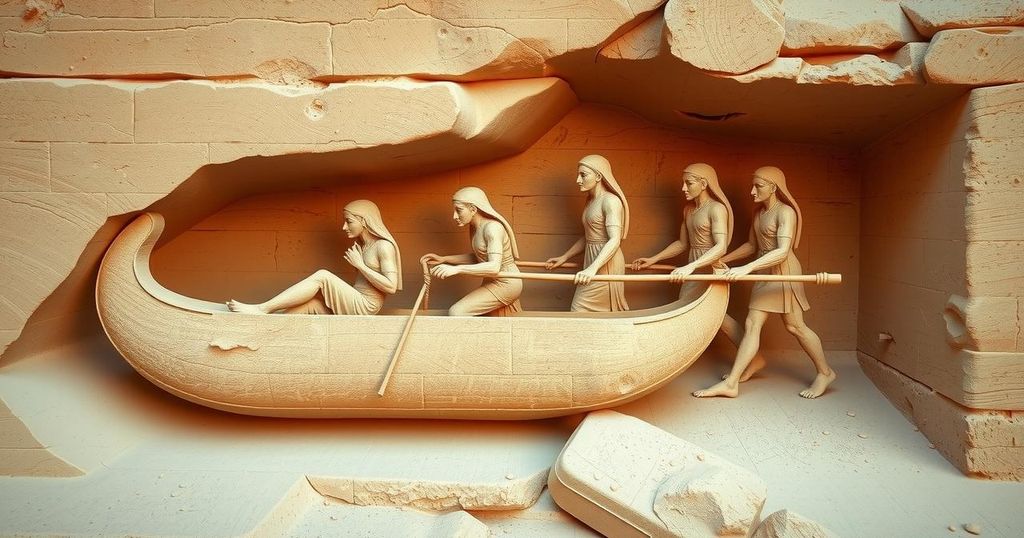Archaeology Breakthrough as Rare Rock Carving Reveals Key Secrets about Ancient Egyptian Kings

- Archaeological discovery near Aswan reveals insights into early Egyptian rulers.
- Rare rock carving dates back to the fourth millennium BC, prior to pyramids.
- Carving depicts a seated figure with a pharaoh’s false beard, hinting at elite status.
- Artwork portrays a boat pulled by five individuals, adding to its significance.
- Discovery marks a critical period in Egypt’s transition to Early Dynastic culture.
Significant Archaeological Discovery Near Aswan
A remarkable archaeological discovery in southern Egypt is again stirring excitement in the world of ancient history. Archaeologists uncovered a rare rock carving near Aswan, which holds the potential to dramatically reshape our understanding of Egypt’s earliest rulers and their political structures. This discovery, believed to date back to the fourth millennium BC, is particularly significant given that it predates the construction of Egypt’s first pyramids by a few hundred years and hints at a society that was already complex enough to produce such artwork,
Insights Into Early Egyptian Political Elite
The sandstone carving, depicting a seated figure bearing the distinctive long, pointed false beard characteristic of pharaohs, exemplifies the sophistication of the political and military elite during the First Dynasty period. As noted in a recent publication in the journal Antiquities, this era marked a crucial turning point of political unification across Egypt. This particular figure is not Pharaoh Narmer, who is often hailed as Egypt’s first pharaoh beginning in 3100 BC, leading to ongoing inquiries surrounding the true identity of this ancient individual portraying a warrior elite. Thankfully, several details from the carving provide clues about the context in which this artwork was created including its depiction of a boat being pulled by five individuals, alongside another person steering it with an oar, which adds to the mystique.
Cultural Context of the Carving
Located beneath rubble in a narrow recess accessible by a sandy ledge, the carving initially commanded a view of the Nile, which is fascinating on its own. The artwork’s orientation towards the north, implying upstream travel on the Nile, speaks volumes about how transportation and trade likely played a role in ancient Egyptian culture. As Egypt was on the cusp of entering the Early Dynastic period—this pivotal transition from separate regional authorities to a unified political structure—archaeological evidence suggests that this transition was rife with conflict. Dr. Dorian Vanhulle, an Egyptologist, emphasizes the vital role of rock art as a medium not only for artistic expression but also as a powerful tool for authority and state formation in ancient Egypt.
In short, this recent discovery near Aswan brings to light an astonishing rock carving that may change our conception of ancient Egyptian kings and their governance. The carving, which dates back to the fourth millennium BC, provides a rare glimpse into early royal iconography while also raising questions about the identity of the depicted figure. As researchers continue their investigations, this finds a prominent place within the broader conversation on ancient Egyptian state formation and cultural evolution, revealing the layered complexities of a civilization in its formative years.






